How to grow fritillaries
The exotic snake’s-head fritillary is the only British native of 130 bulbs in this fascinating family, many of which deserve a place in the garden. John Hoyland, garden adviser at Glyndebourne in East Sussex, recommends the best and shares tips on how to grow them, with additional tips from botanical artist and Fritillaria specialist Laurence Hill.
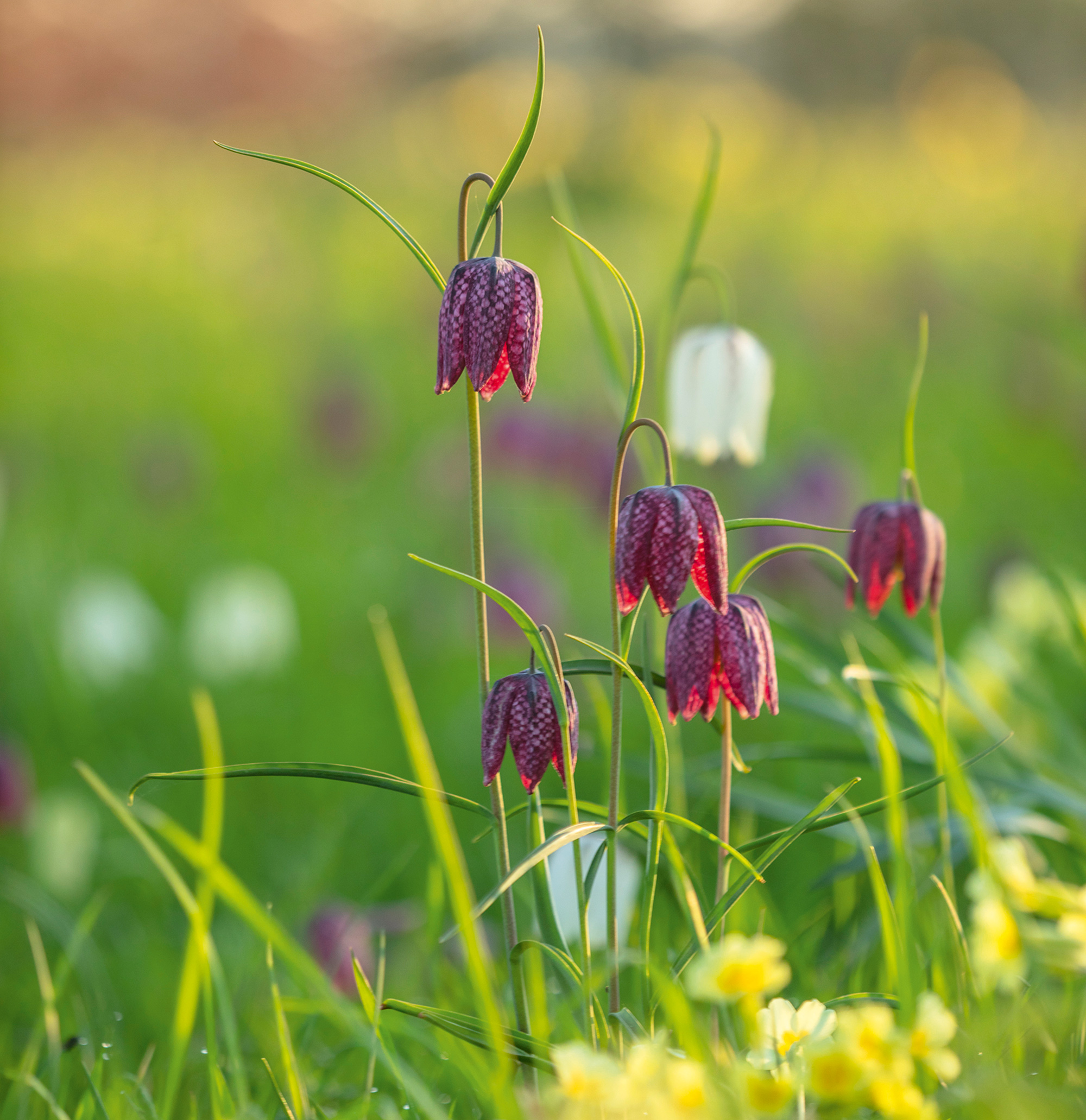
Expert tips for growing fritillaries
1. Plant them on their side
The bulbs of both Fritillaria imperialis and F. persica are likely to rot on wet soils, so plant them on their side or lay them on a layer of grit to help keep moisture out of the crown. Plant them about three times the depth of the bulb. After several years, both will produce lots of foliage and no flowers, a sign that they are overcrowded. Carefully dig up the bulbs in late spring, divide and replant immediately, adding lots of fresh compost.
2. Plant in moist spots
Species such as Fritillaria meleagris, F. pyrenaica, F. uva-vulpis and F. acmopetala are tolerant of most soils, but they will spread most rapidly in moist ones. F. assyriaca, F. elwesii, F. michailovskyi and F. pontica need to be in well-drained soil in full sun.
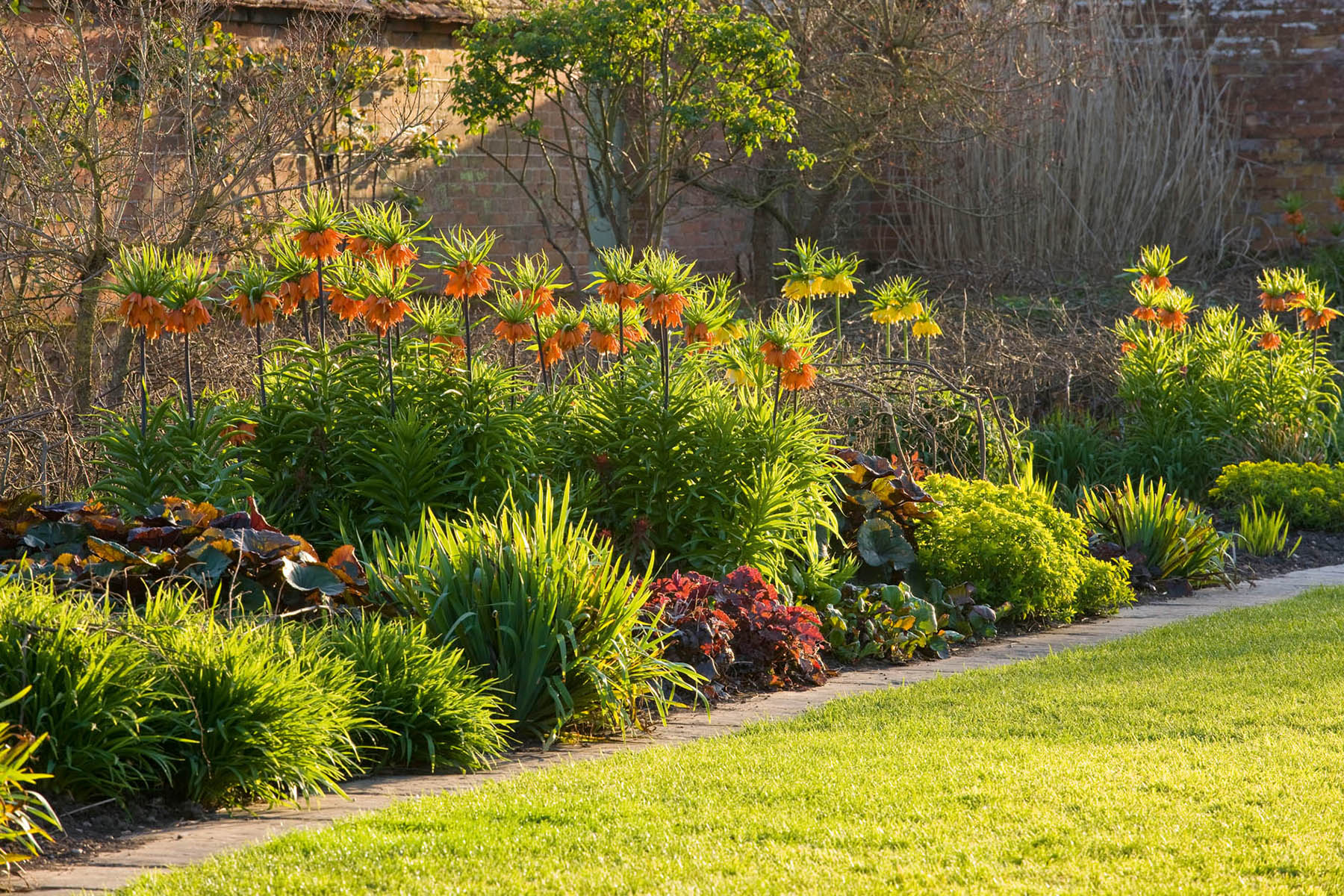
3. Grow them inside as well as out
To appreciate the grace and elegance of fritillary flowers, grow a few in pots, where you can study the flowers closely. A collection of containers, standing on a table close to the house, is as rewarding as the most extravagantly planted border.
4. Be careful what you plant them in
Fritillary expert Laurence Hill calls this 'the single most important aspect of growing fritillaries'. The growing medium should be both free draining and moisture retentive. Laurence suggests a mixture of loam-based compost, grit, humus (leaf mould or bark) and Perlite.
For fritillaries grown in pots, use a mix of about two parts compost (John Innes No 2 is ideal) with one part grit. Repot the bulbs at the end of the summer using fresh compost.
5. You can plant fritillaries in your lawn
The best fritillaries to naturalise in grass are Fritillaria meleagris, F. uva-vulpis, F. pyrenaica and F. elwesii. In all cases, leave mowing until early September to give the plants a chance to both seed themselves and to die down naturally.
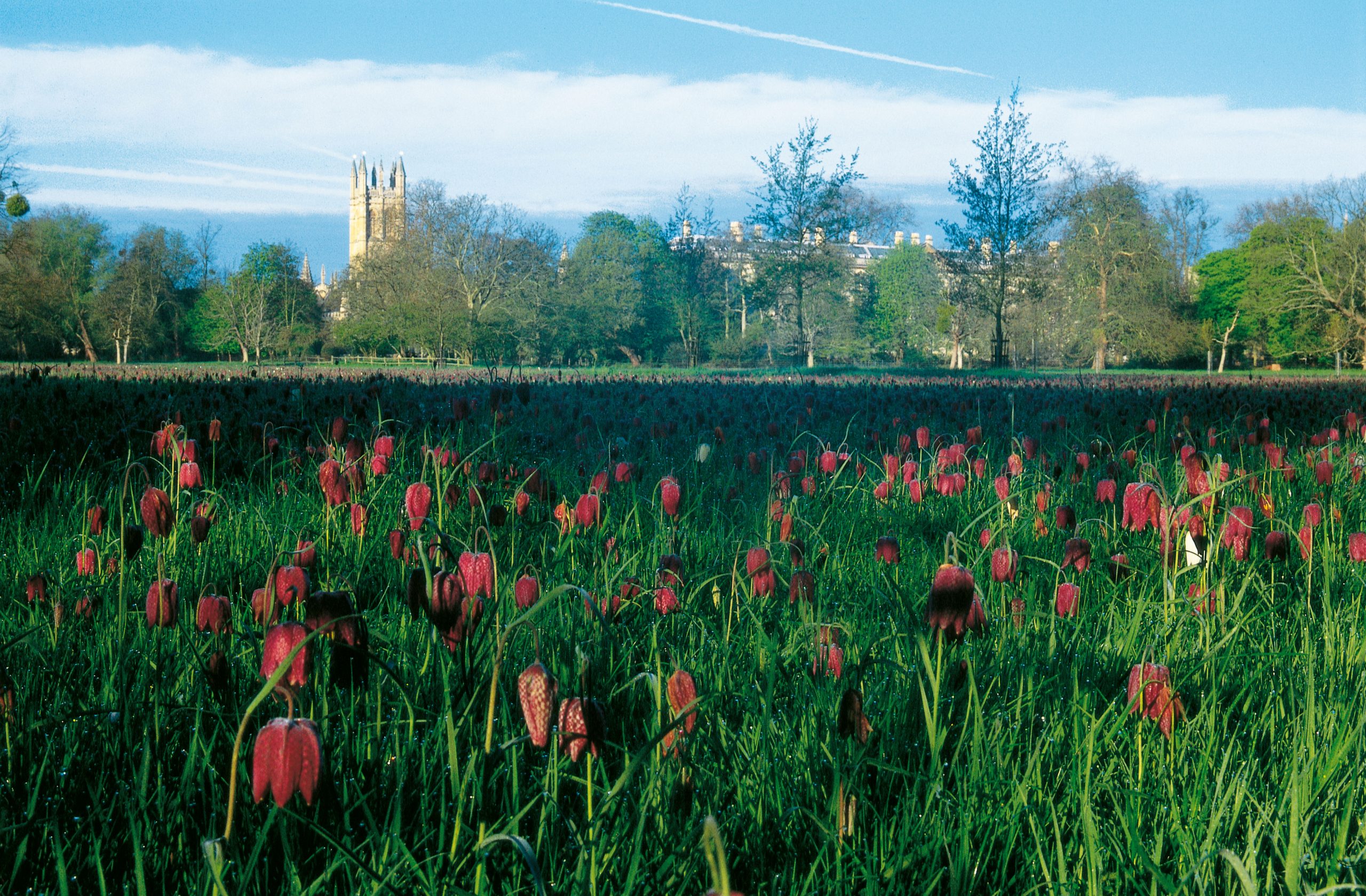
6. Keep it simple — and leave the tricky varieties to the experts
Stick to the easy-to-grow plants mentioned below. Many of the other species are demanding plants that require a deal of molly-coddling to thrive. The glasshouses at Kew and at the Cambridge Botanic Garden (which holds a National Collection of the genus) are filled in spring with pots of these fritillaries. Admire them there, grown by experts, and concentrate at home on those species more considerate towards us ordinary gardeners.
Sign up for the Country Life Newsletter
Exquisite houses, the beauty of Nature, and how to get the most from your life, straight to your inbox.
If attempting trickier species from the Mediterranean — F. forbesii from Turkey for example, or F. biflora, from southern coastal California — Laurence Hill suggests that you may need a glasshouse to shelter them from the winter frost and summer rain; similarly, F. aurea and F. gibbosa require very careful watering during the cold months although they’re fully hardly.
Eight of the best fritillaries to grow
Fritillaria meleagris
There are about 130 species of fritillaria bulbs, only one of which is native to Britain. The snake’s-head fritillary, Fritillaria meleagris, can be seen most spectacularly in the water meadows close to Magdalen College, Oxford. The damp soil of the meadows provides the perfect growing condition for the plant, but it is tolerant of a wide range of situations and has even naturalised in orchards on the dry chalk soil of the South Downs. The charm of its broad-shouldered bells and the exquisite, chequered patterning of its petals have kept the plant in cultivation for centuries. The flowers range from deep purple to dusky pink, with the occasional white seedling appearing.
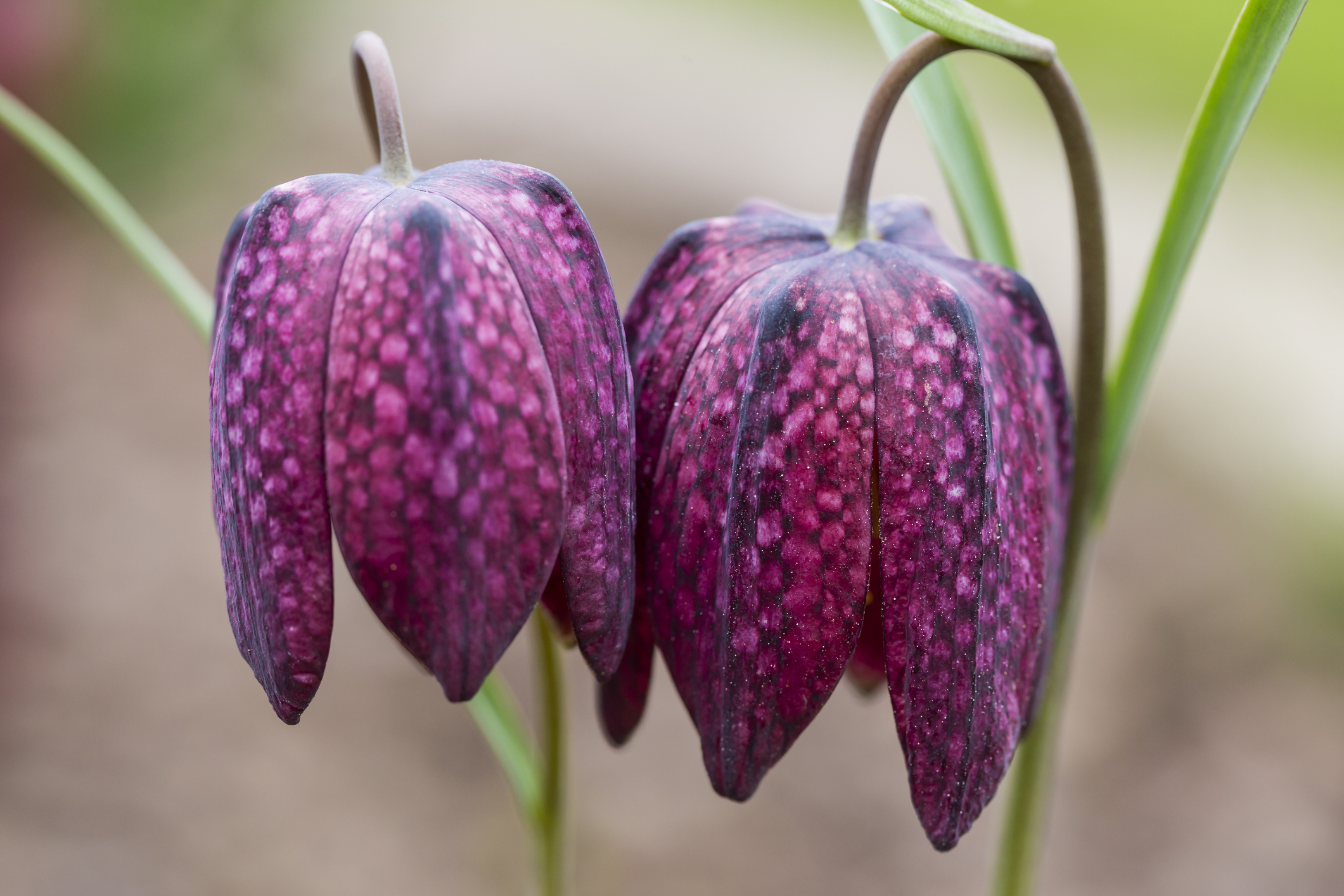
Fritillaria meleagris is best sown or planted into moist wildflower meadows and mown in late summer (when grown from seed, it takes four years to flower). It will grow equally well in a damp border, given some shade. Fritillaria montana and F. pyrenaica (below) can be planted in similar locations.
Fritillaria imperialis
Although the genus has flowers in a wide range of form and habit, few are as exuberant as Fritillaria imperialis. Most, in sober tones of purples, mauves and greens, are unpretentious plants. Vita Sackville-West described them, unkindly, as ‘sulky-dark’ flowers ‘staining the ground’.
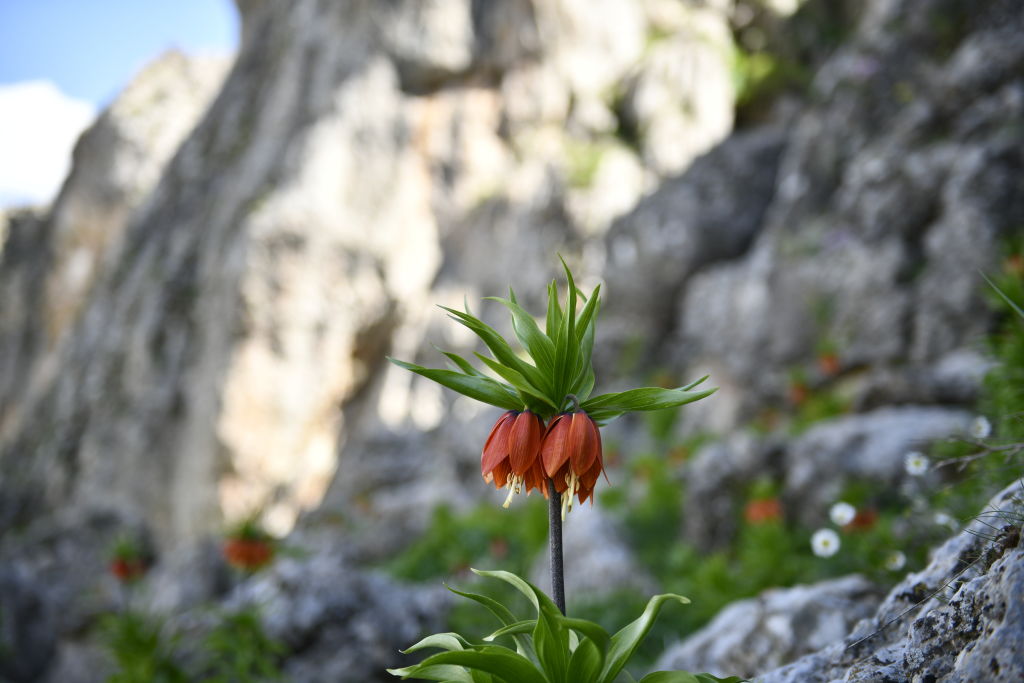
For many gardeners, however, this restrained palette of colours is a welcome antidote to the strident-yellow daffodils, dirty-pink hyacinths and bold-red tulips that dominate the season. A drift of the demure green and mahogany bells of Fritillaria acmopetala, for example, is as seductive and enchanting as anything else in the garden in spring. Equally easy to grow, and widely available, is F. michailovskyi, the pixie-hat flowers of which are a bright mahogany edged with a broad band of gold.
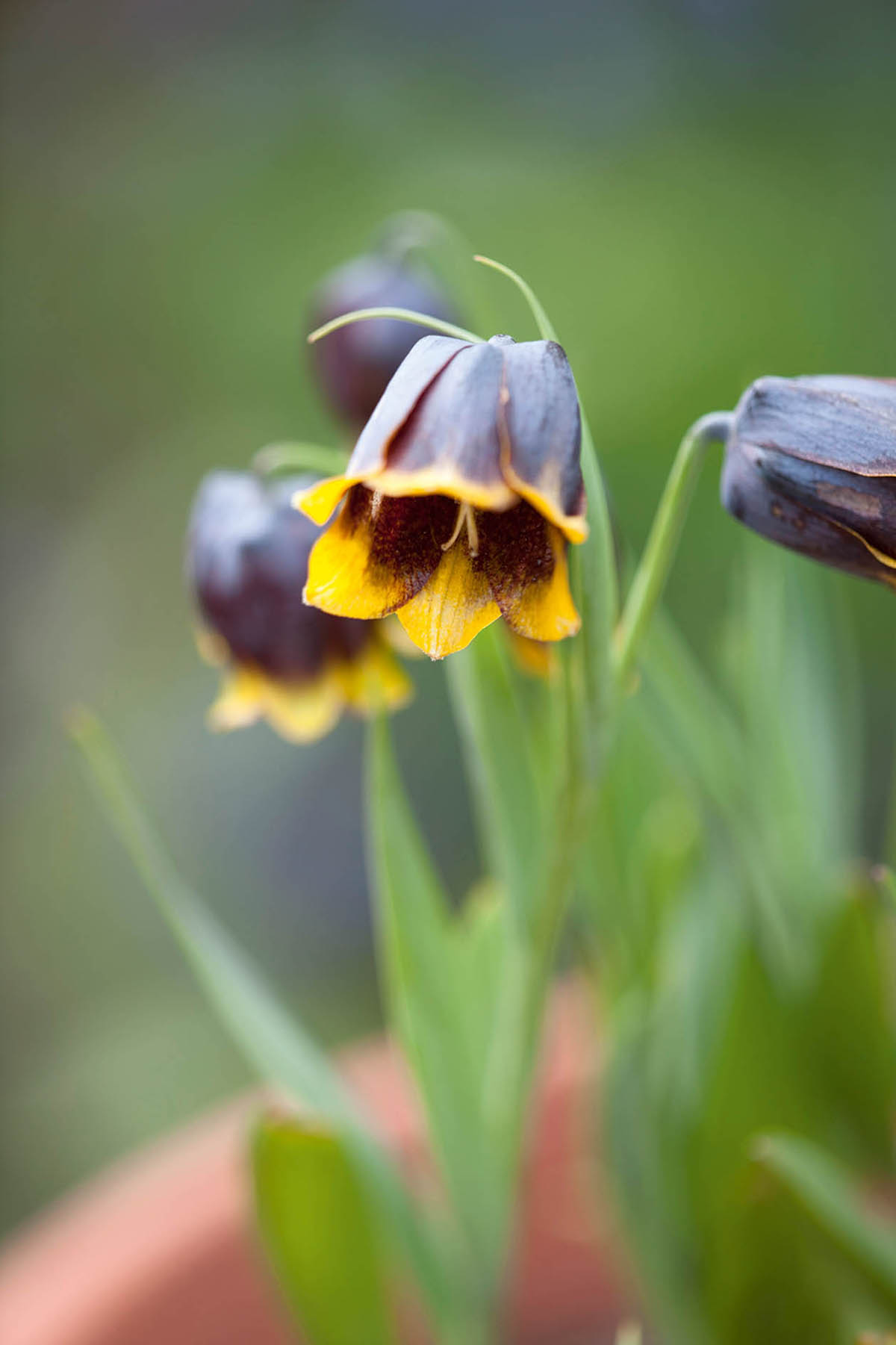
Fritillaria elwesii
An elegant, airy plant with wiry 1ft-tall stems that support two or three long and narrow flowers. The petals are striped in a rich maroon and yellowish green. It grows well in containers, but it is a vigorous species so, after enjoying them in a pot, plant the bulbs in the garden.
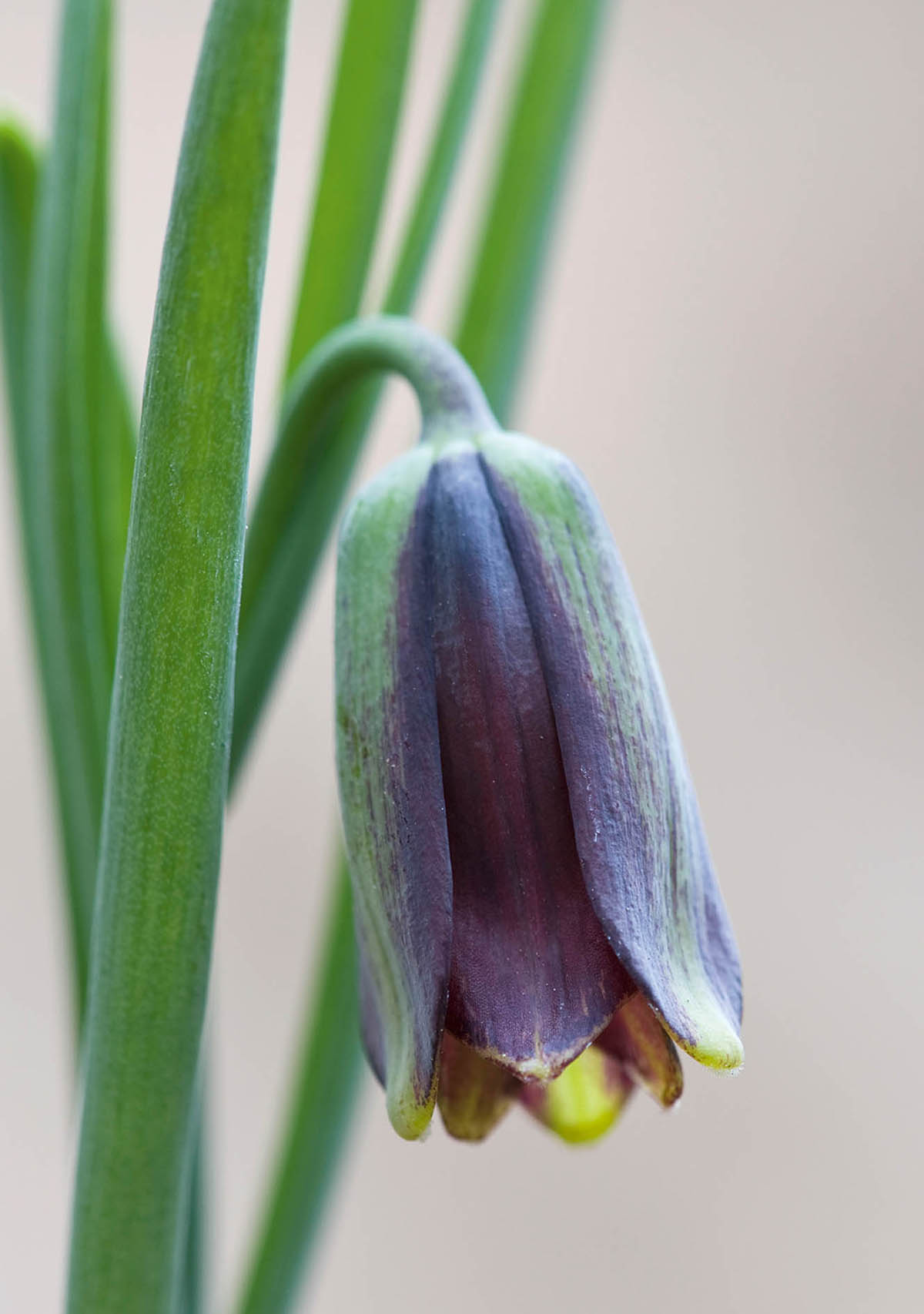
Fritillaria uva-vulpis
Although not introduced into Britain until the 1960s, this Iranian species quickly became popular, due in part to the ease with which it establishes large colonies. Although the narrow, mahogany-coloured bells are edged in gold and usually appear singly, this is variable and occasionally two or three flowers appear from the same stem. It grows to about 18in tall.
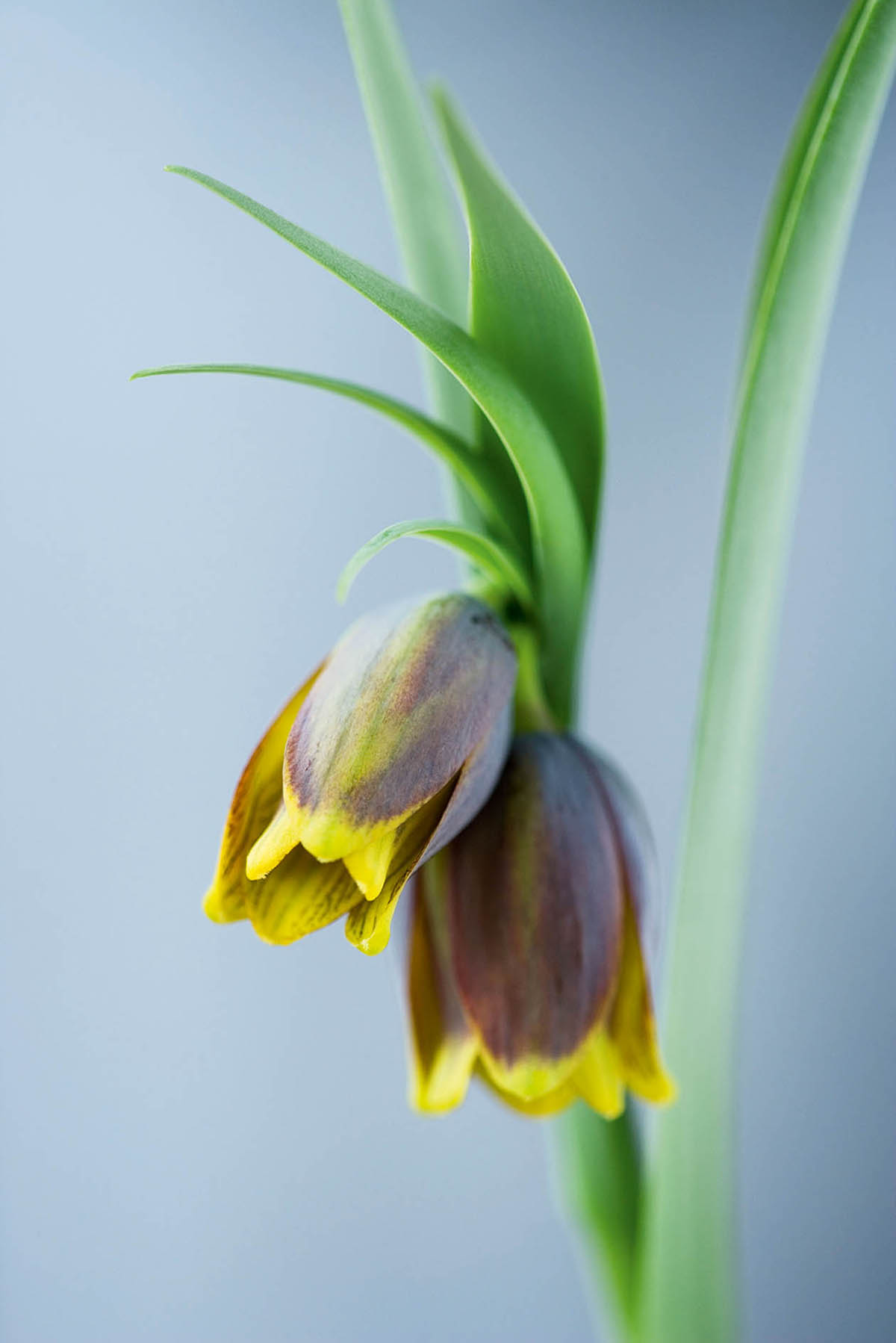
Fritillaria persica ‘Adiyaman’
Named after the Turkish town where it was found growing, this cultivar is far superior to the species, with larger flowers and brighter foliage. The flowers are almost black and bloomed like a Merlot grape. The blue-grey foliage unfurls from the soil as early as February and, by March, the plant is in full, glorious flower.
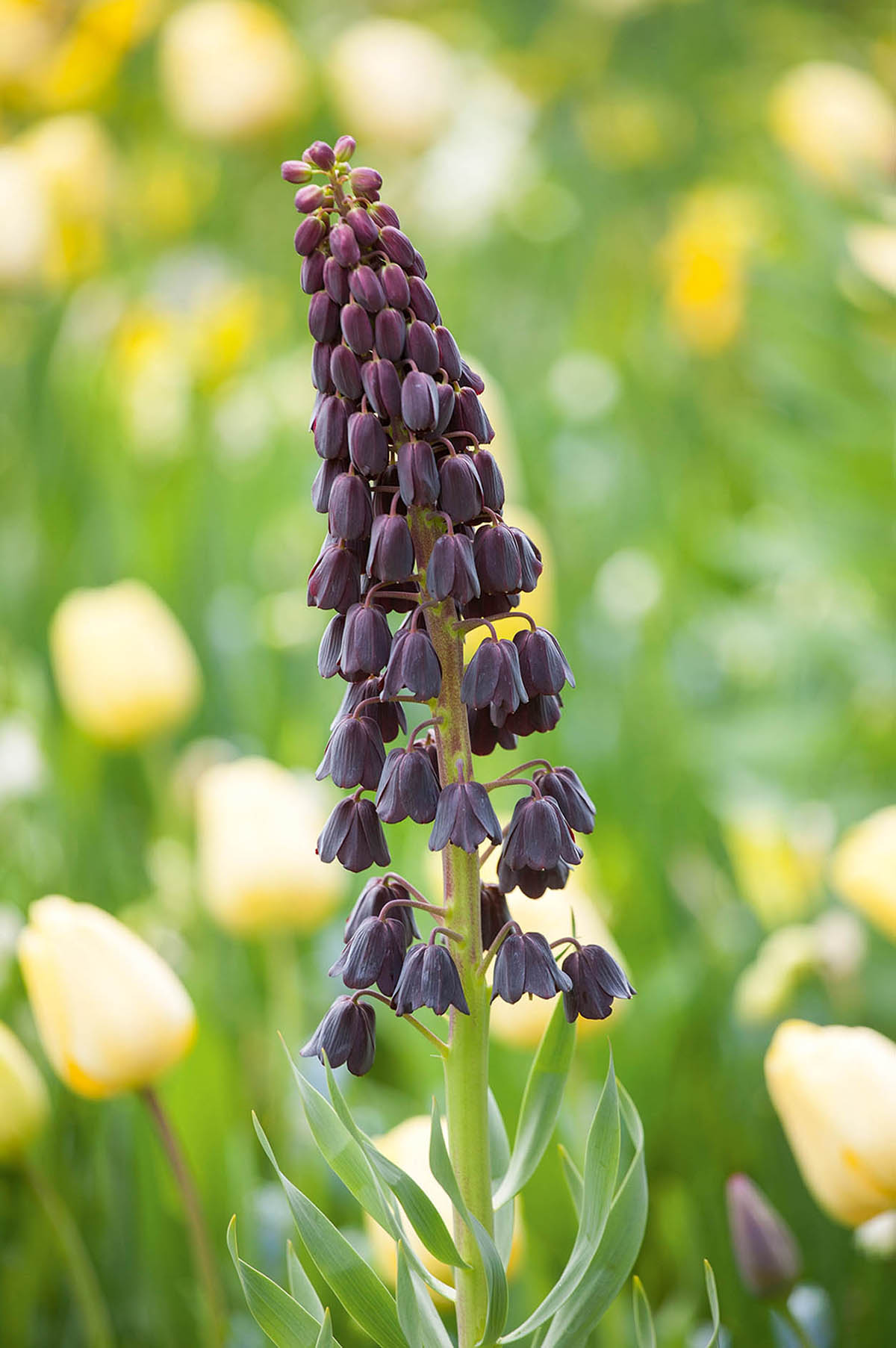
Fritillaria imperialis ‘William Rex’
The bells of the flower are stained bronze at the top, a colour that is repeated on the fat stems. The foliage is broad and glossy. It is less temperamental than the species and bulks up quickly to form impressive clumps.
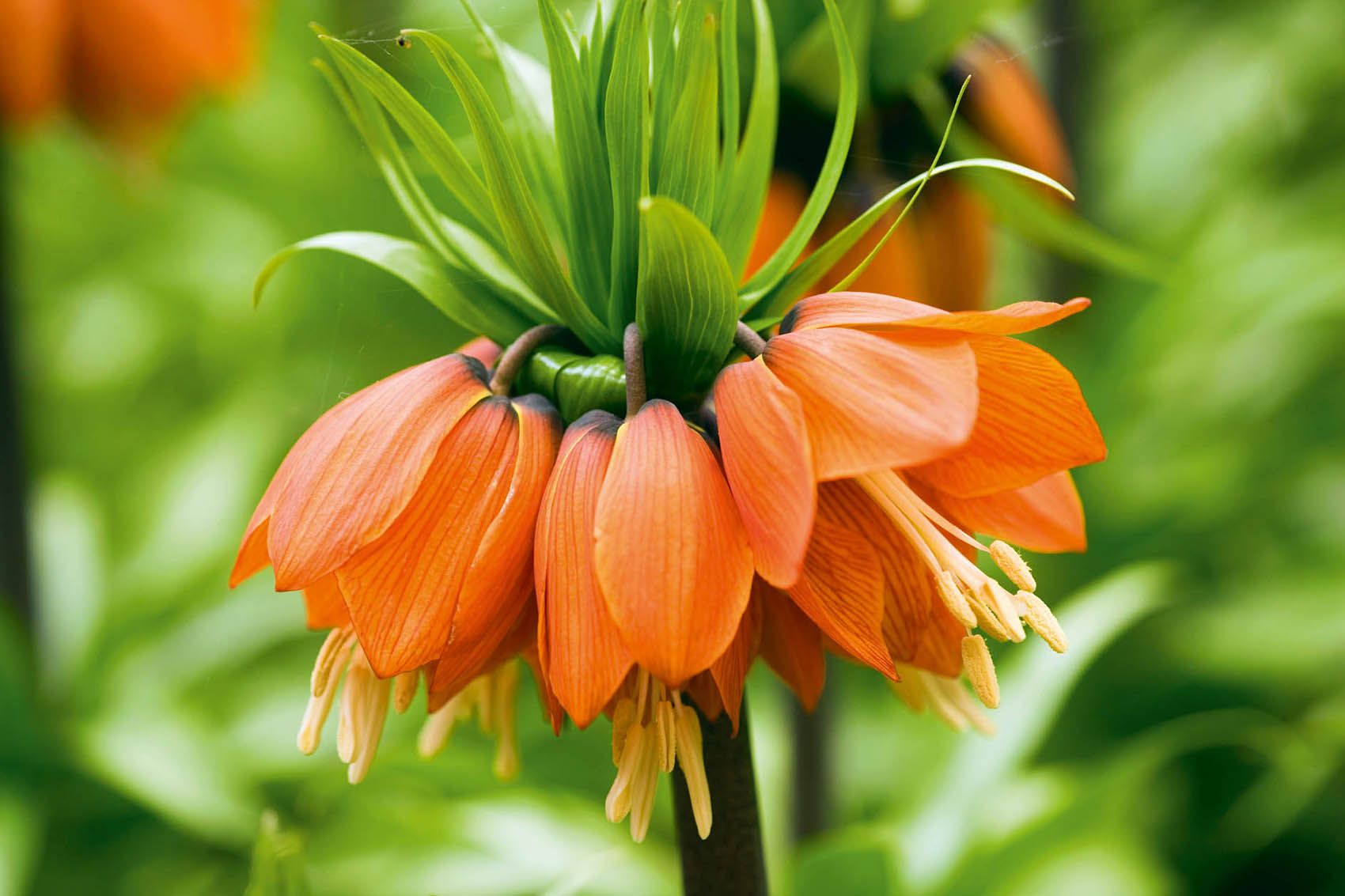
Fritillaria pallidiflora
This is only properly happy in humus-rich, well-drained soil in dappled shade. If you can provide this, it will reward you with a drift of luminous, creamy-yellow bells throughout April. The glaucous foliage grows to 16in tall, with each stem topped by four or five flowers.
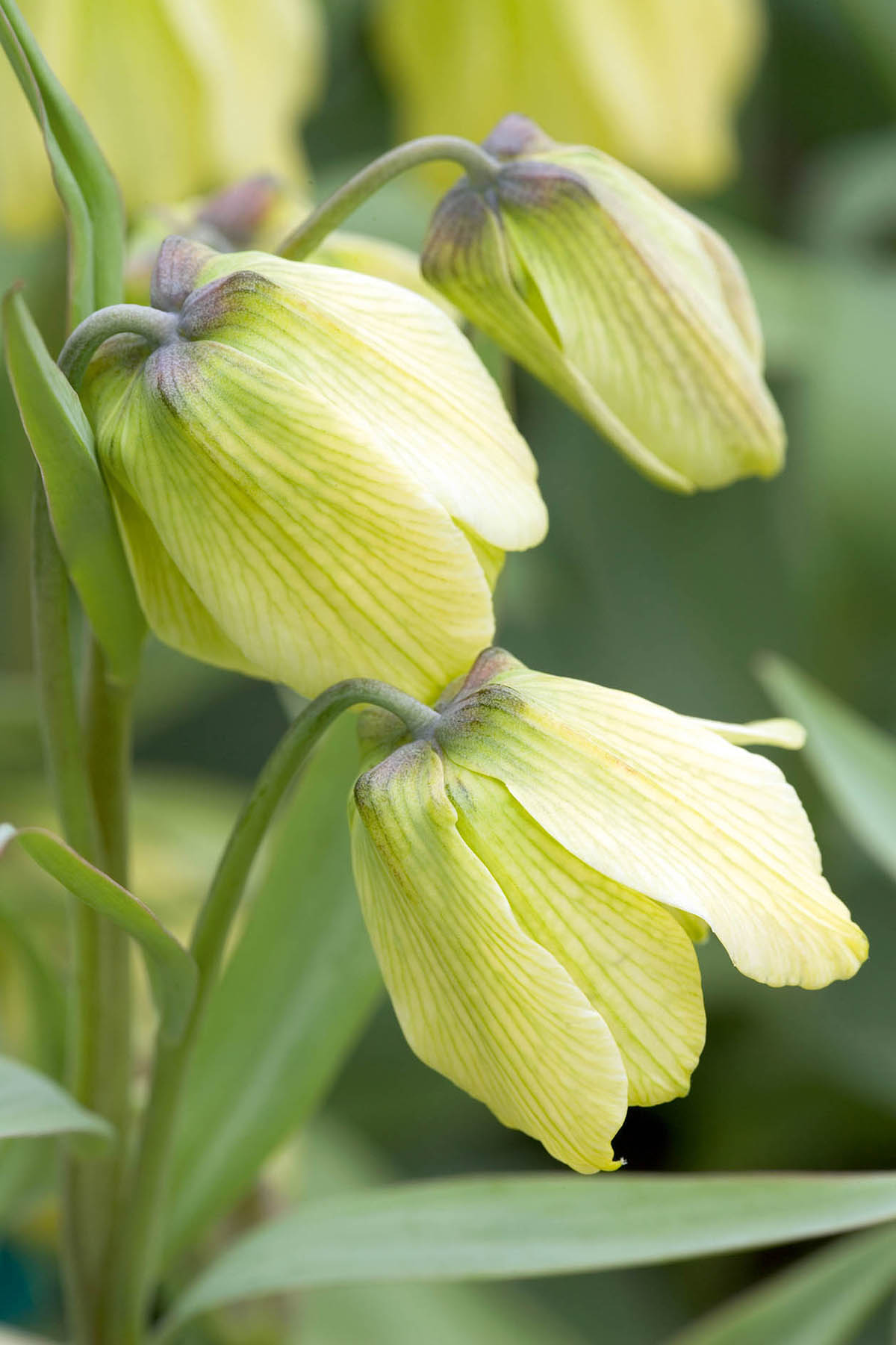
Fritillaria pyrenaica
In the wild, this grows in alpine meadows and is strong enough to hold its own in the rough and tumble of a British border or even in rough grass. The bells are faintly tessellated in the manner of the snake’s-head fritillary and edged with gold. It grows to about 1ft tall and sometimes has two, or even three, bells hanging from the top of the stem.
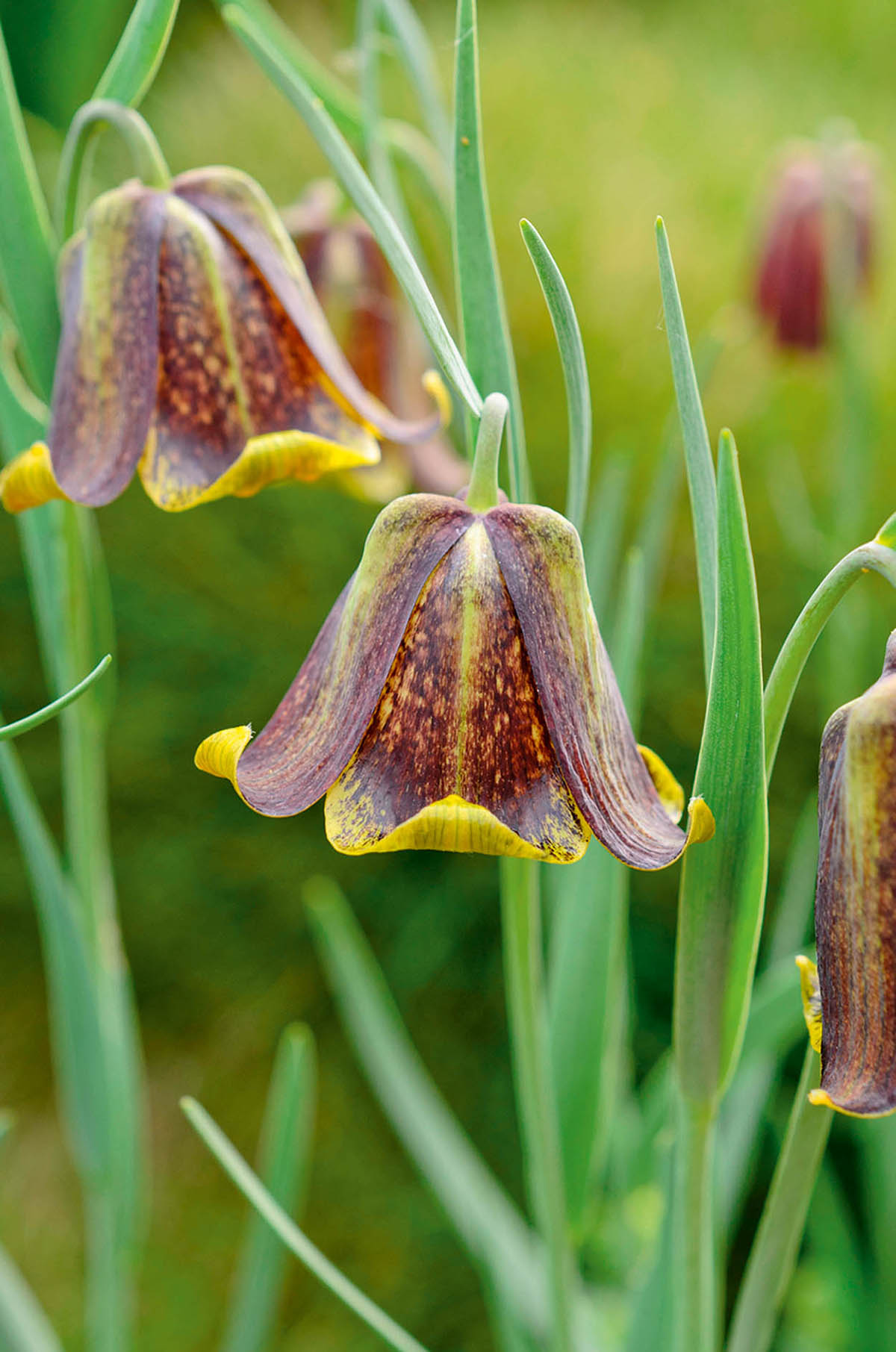
The history of fritillaries
When Fritillaria imperialis first arrived in Vienna, in 1576, it caused a sensation. As part of the first wave into Europe of unfamiliar plants from Constantinople, it soon spread throughout the gardens of the Continent. At 3ft tall, with brightly coloured flowers that have an unruly topknot of leaves, it is easy to imagine how thrilling its appearance must have been. It featured in many paintings of the period and a still life of 1626 by Johannes Bosschaert famously shows an enormous Fritillaria imperialis dominating the canvas, overshadowing all the fancy tulips, anemones and other exotic plants that were exciting collectors of the time. Clearly, he considered the crown imperial, as it became known, to be supreme. It remains, today, a dramatic presence, still capable of producing gasps of wonder.
Fritillaria imperialis has become a mainstay of spring borders, where it stands proudly, and flamboyantly, above tulips, hyacinths and narcissus. Throughout April the bell-like flowers dangle from solid stems, attracting pollinating insects to the teardrops of nectar that form at the base of each flower. From its first unfurling, the plant makes its presence known by its pungent, foxy smell: to some, this is a disagreeable, even nauseating, scent; to others, it is one of the perfumes of spring, a sign that the garden is reawakening.
Early fascination with fritillaries was not limited to Fritillaria imperialis. The attention of plant collectors was also captured by the spires of chocolate-coloured bells of F. persica, the stems of which are tightly packed with flowers that have a silvery sheen. John Gerard wrote in 1597 that the species was widespread in London gardens, the result, he wrote, ‘of the industrie of Travellers’. No mention of the hard work of those gardeners who struggled on clay soil to provide the well-drained conditions the bulb demands. Recently, a cultivar, F. persica ‘Ivory Bells’, has been introduced that has cream-coloured flowers. Grown together, the two forms make an arresting sight.
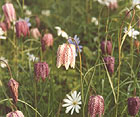
The Fritilliaries of Oxford
Why we should praise Magdalen's Fellows for ignoring Repton's advice, and allowing the fritillaries to blossom
-
 'To exist in this world relies on the hands of others': Roger Powell and modern British bookbinding
'To exist in this world relies on the hands of others': Roger Powell and modern British bookbindingAn exhibition on the legendary bookbinder Roger Powell reveals not only his great skill, but serves to reconnect us with the joy, power and importance of real craftsmanship.
By Hussein Kesvani
-
 Spam: The tinned meaty treat that brought a taste of the ‘hot-dog life of Hollywood’ to war-weary Britain
Spam: The tinned meaty treat that brought a taste of the ‘hot-dog life of Hollywood’ to war-weary BritainCourtesy of our ‘special relationship’ with the US, Spam was a culinary phenomenon, says Mary Greene. So much so that in 1944, London’s Simpson’s, renowned for its roast beef, was offering creamed Spam casserole instead.
By Country Life